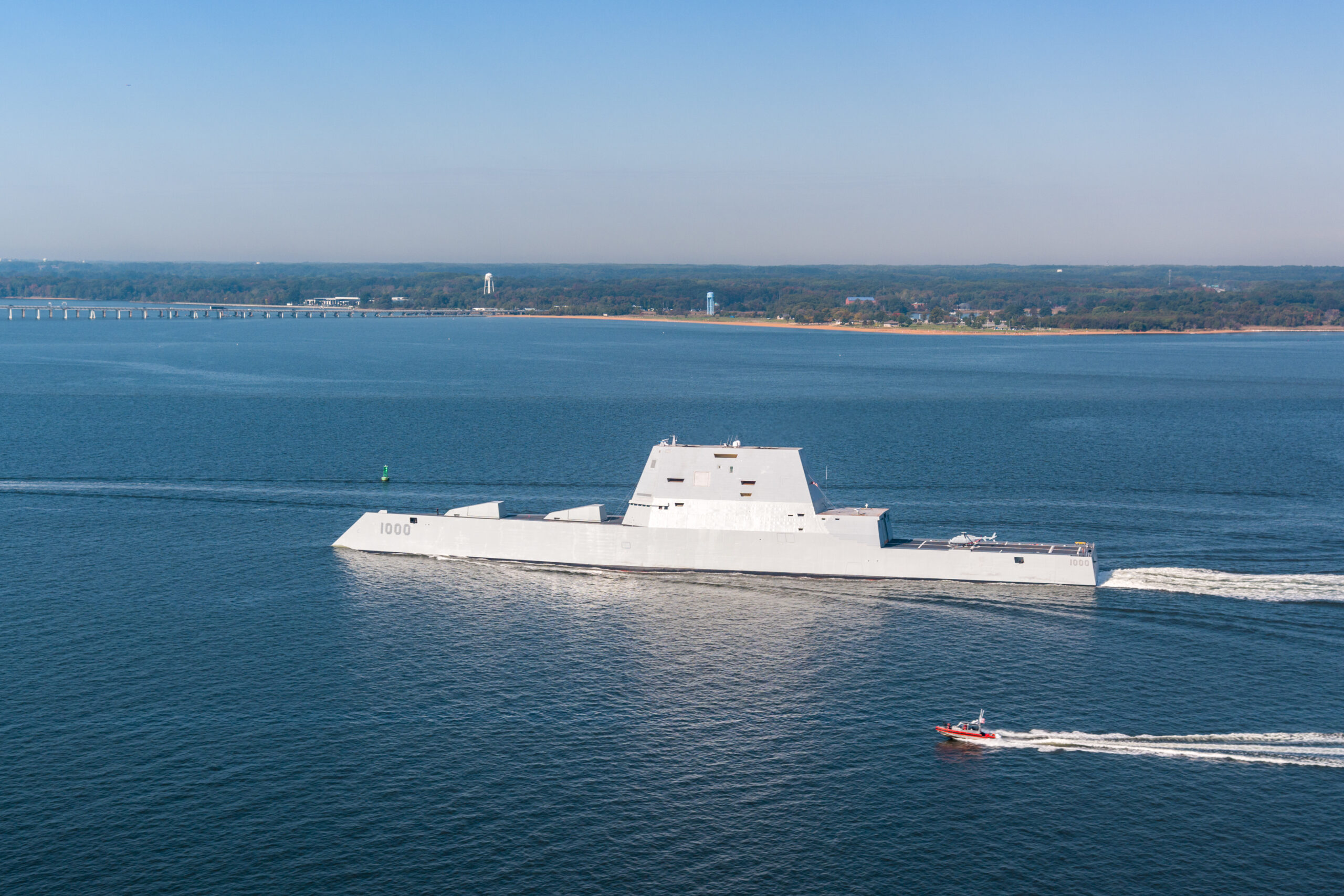
The Navy cut its buy of Zumwalt-class destroyers from nearly three dozen to three. The decision may become a problem for testing the service’s premiere hypersonic weapon. (U.S. Navy/Liz Wolter)
WASHINGTON: A new problem may be emerging for the Navy’s stealthy class of destroyers: there’s not enough of them to quickly test the service’s premiere hypersonic weapon.
“The Navy intends to execute phase 2 operational demonstrations, but limited flight test opportunities pose a risk to demonstrating the required operational capability in support of the fielding of the hypersonic missile system onboard a Zumwalt-class surface combatant,” according to the Pentagon’s top weapons tester, known as the director of operational test and evaluation, or DOT&E.
That office publishes an annual report every January summing up the developmental testing statuses of the Pentagon’s high-profile weapon systems. The report often excludes sensitive details due to security concerns, but still provides an inside look at the difficulties each program is facing.
The Navy’s plans for developing and deploying a hypersonic weapon, formally called Conventional Prompt Strike, includes three phases: testing the core systems ashore, further testing aimed at fielding the weapon onboard a Zumwalt-class destroyer and finally transitioning to a fully-fledged acquisition program. The service is working with the Army, which plans to field its own land-based version of the weapon system, during development.
The emerging problem for CPS is a lack of testing opportunities, according to DOT&E. What exactly that means is not spelled out, but the simplest reading is the Navy’s infamously truncated buy on the program — from a planned 32 to just three — may be coming back to haunt them. The service only has two of those three vessels at its disposal currently, with the third not expected for delivery until fiscal 2024.
Between putting the Zumwalt class through the paces all warships must endure, unmanned experimentation efforts in which the class is expected to participate and delays in the program caused by a series of changes the Navy made to the ship’s mission and primary weapon systems, it’s not hard to see why the vessels’ time is stretched thin.
The Navy’s plans currently call for CPS to be deployed on a Zumwalt by fiscal 2025 and integration on a Virginia-class submarine would follow suit in FY28.
Army is banking on Navy to get it right
The Army’s effort, a rapid prototyping program out of the service’s Rapid Capabilities and Critical Technologies Office, is dubbed “Dark Eagle.” The program is one of the Army’s 31+4 top modernization priorities and scheduled to be in soldier prototyping by FY23. Late last year, RCCTO delivered the prototype launch batteries to soldiers.
According to DOT&E, there is not currently enough data available to assess the effectiveness, suitability and survivability of the Dark Eagle program; instead, DOT&E reports, “The Dark Eagle program has thus far been relying on the Navy and their Conventional Prompt Strike program to evaluate weapon lethality.”
While the Navy has conducted flight tests of the CPS warhead, the report states that the value of data collected from those tests was “limited” because the target was not “operationally relevant.”
“Neither program has yet performed arena testing on the operationally representative warhead, which is fundamental to the development of the lethality model,” the report states.
The report recommends that the Army develop a test and evaluation master plan, as well as a plan for transitioning prototypes to production and fielding. It also recommends that the services complete live-fire test and evaluation, while incorporating operationally relevant targets. According to the report, the two services are planning three joint test shots.
Army eyes TBI monitoring, wearable tech for soldiers in high-risk billets
“We are also looking at what additional personal protective equipment we can provide to our folks, especially instructors and others who are routinely exposed to blast pressure,” said Army Secretary Christine Wormuth.


























